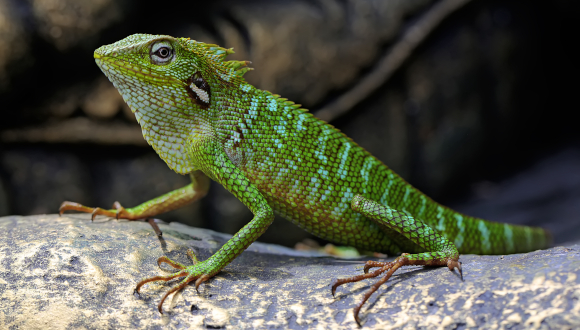Combined deforestation and climate change may be devastating for the animal kingdom

Joint TAU/University of Colorado study focused on lizards, but may have wider application
Support this researchA new study by Tel Aviv University (TAU) and the University of Colorado (CU) finds that the combination of global warming and extreme heat events, alongside the continued expansion of deforestation in the world, may be devastating for many species of animals, especially those that know how to climb trees.
The researchers focused on lizards and demonstrated that following the effects of climate change, they will seek refuge from the hot ground by spending a lot of time on trees. However, due to human-related activities such as deforestation, urbanization and the expansion of agricultural lands at the expense of natural lands, the availability of trees in the areas where the lizards live will decrease, and this may lead to the collapse of many populations.
The research was conducted under the leadership of doctoral student Omer Zlotnick from the laboratory of Dr. Ofir Levy at the School of Zoology of TAU’s George S. Wise Faculty of Life Sciences and Steinhardt Museum of Natural History in collaboration with Dr. Keith Musselman from CU. The study was published on March 5, 2024, in the journal Nature Climate Change.
The researchers explain that the climate crisis and global warming force animals to look for more comfortable places to stay in order to escape the extreme heat, just as we look for a shady area on a hot day. For animals that know how to climb, trees can serve as a comfortable and pleasant refuge. One of the reasons for this is that the farther up from the ground, the lower the air temperature and the stronger the wind. Therefore, on hot days for example, animals can climb up the tree to escape from the hot ground. The importance of trees, then, is expected to increase as the climate warms.
The problem is that in many places in the world the density of trees is actually decreasing, mainly due to phenomena such as deforestation and the expansion of the use of trees for various purposes such as construction. This creates a situation where, on the one hand, due to climate change, the animals will depend more on trees for their survival, while on the other hand the destruction of habitats will lead to a decrease in the availability of trees.
“As part of the research, we wanted to examine what the combined effect of these two processes would be on animals,” Zlotnick says. “Specifically, we focused on lizards, because they are very dependent on their environment to maintain a normal body temperature, and a lack of comfortable places to stay can affect them dramatically.
“In the study, we used a computer simulation to simulate where the lizard should be — in the sun, in the shade, or on the tree — every minute for 20 years, under the climate conditions that existed in the past and under those that are expected in the future. Using the simulation, we examined how populations of lizards would be affected by climate change when trees are available, and how their situation would change following the felling of trees in their habitat.”
The results of the study showed that, in general terms, climate change is actually going to benefit many lizard populations. In most places, the expected warming will allow lizards to be active longer throughout the day and throughout the year, as there will be fewer times when it is too cold for them to come out of their burrows. However, when climate change occurs at the same time as the felling of trees, the trend is likely to reverse, so that many lizard populations may collapse. In areas with a warm climate, climate change, even if no trees are cut down, is expected to harm lizard populations, and cutting down trees will make the situation even worse.
“What’s really interesting about lizards is that they just need to be able to move a short distance around the tree trunk to get to a very different climate and habitat environment,” said Dr. Musselman. “These microhabitats are particularly important when we think about how we modify our natural environment and make conservation decisions.”
“Our research focused on lizards, but it actually demonstrates a broader problem that is relevant to many species of animals,” Dr. Levy concludes. “Our results demonstrate that trees are crucially important to the ability of animals to cope with climate change, and in many cases their availability can be, for the animals, the difference between crawling and collapsing. Our research proves how important it is to preserve forested areas and trees in general, especially in light of the changing climate. As part of the research, we also provide more practical tools for decision makers, such as the height or density of trees required in different areas.
“We hope that this research will be used to build more effective programs for the conservation and restoration of natural areas, so that we can provide the animals with what they need to survive.”